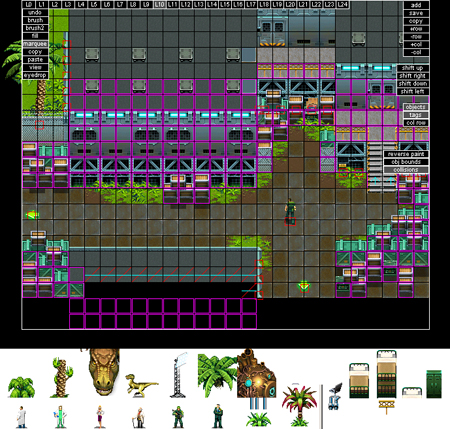Stranded 2 Developer Diary: Part 2
Revealing the Mysteries of Time

It's been a busy month for the Stranded team as we've implemented the vast bulk of gameplay and design to transfer our ideas from paper to playable demo.
This time round we'll be speaking with the Stranded design team who are currently creating the game's environments, scripting compelling missions, as well as putting the final touches to the plot.

We can reveal that the name of the sequel will be Stranded: Mysteries of Time to reflect the importance time travel plays in the game. By exploiting time travel elements we've fused two eras of technological understanding; a Victorian steampunk style with the present day.
Combined with natural influences from the prehistoric island, there is an unusual marriage of technology and nature across time. One theme that arises from this is the personal responsibility that accompanies the use of powerful technology.
David, the lead designer on Stranded, explains how his team took these themes and incorporated them into the game:
"We started by deciding what the player should experience, and how this could be divided into interesting gameplay segments. The story is split into episodes, much like a TV show, which allows us to incorporate cliff-hangers and maintain suspense. Each of these episodes is split into a number of tasks that can be accomplished in anything from 30 seconds to ten minutes."
When creating the environments, the designers use a custom level editor that allows them to specify the layout of buildings, jungle and all the other areas the player will experience.

Furthermore they can position trees, characters and other items the player can interact with, which will be referenced by the game engine's scripting language.
"The environments are revised multiple times during the course of the project. They can change as a result of art revisions, layout bugs, global design decisions and quest design," says David.
"For example, we might find that a quest where dinosaur eggs are transported to a particular location proves boring. In this case we can tweak the map to shorten the distance, ensure the route is visually diverse and also think about providing further subtasks en route."
Continual play testing and feedback from our QA team help pace the game and ensure plot twists are revealed at the right moments.
It's important that gameplay elements are appropriately staggered to keep the experience feeling fresh. Getting the layout of each area just right will ensure the user feels challenged but not frustrated:
"We have to ask ourselves questions such as, 'Is there enough space to fish here?', 'Are these plants too hard to find?' and 'Can the player recognise where they are or where they're going?'," says David.
The world is brought to life by scripting events and interactions between the characters and the surrounding environment. The design team use a scripting language which enables them to alter events in the game, without having to bother the programming team.
This frees the programmer to work on cool effects and optimisation, as well as programming other low level functionality, which can later be used by the scripter. This could include a cut scene effect, like a camera shake, through to the ability to trigger a new gameplay feature, like day-and-night cycles.
 The glamorous side of scripting is that it enables the designer to become director by framing shots, positioning the cast of characters and controlling the flow of dialogue. The frustrating aspect is that the work involves a lot of reiteration to achieve a high level of quality.
The glamorous side of scripting is that it enables the designer to become director by framing shots, positioning the cast of characters and controlling the flow of dialogue. The frustrating aspect is that the work involves a lot of reiteration to achieve a high level of quality.
As we're also creating a 3D version of the game, the maps have to be tweaked to ensure items aren't hidden behind buildings when rendered differently. Everything has to be done twice!
One of the new mechanics we're currently refining is an updated combat system. In the original Stranded, you hunted for food to survive, but in Stranded: Mysteries of Time you'll have to defend yourself from attack.
The indigenous creatures of the prehistoric island are more hostile than those found in the present day, so combat is less of a one-sided affair. We've moved away from the primitive bow and arrow to something more action-inspired.
Fishing has been taken to the next level and we've introduced a brand-new mechanic to make it more enjoyable and easier to understand. Players can now catch different sizes of fish and keep them in an aquarium, too.
We're certainly trying to squeeze as much diversity as possible into the game, and we're determined to only be limited only by technology rather than our imaginations.
Next time round we'll be donning our overalls, grabbing a paintbrush and speaking with the art team. We'll be taking a look at the different techniques used to create Stranded, from 3D modelling through to illustration work and old school pixel pushing. See you next month!
